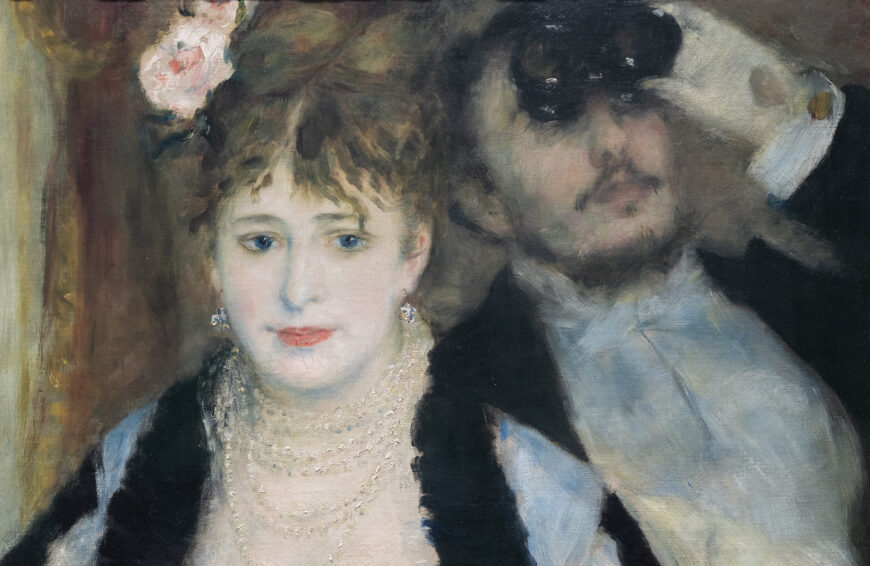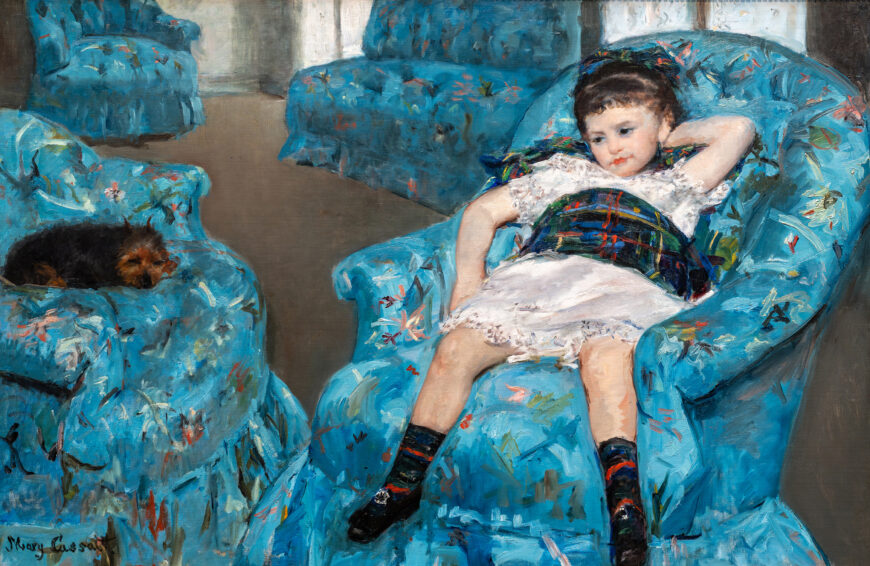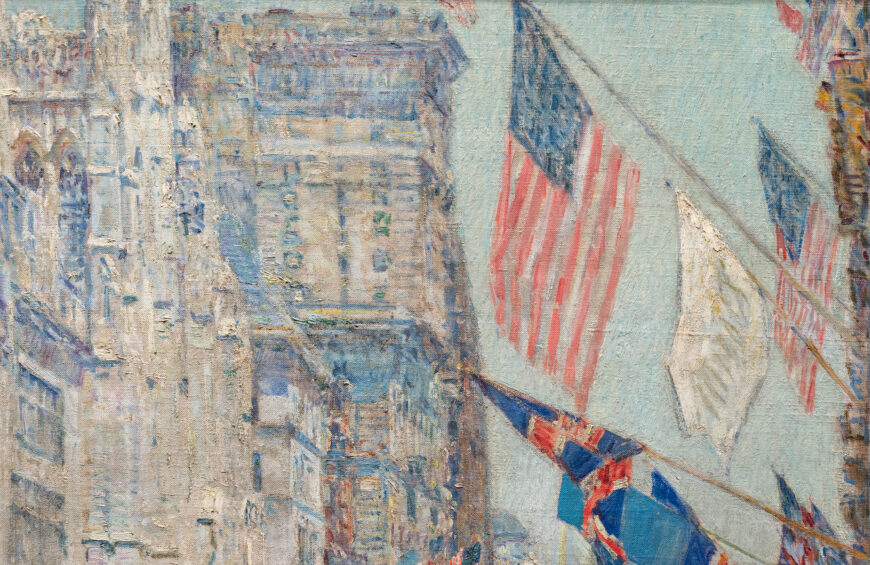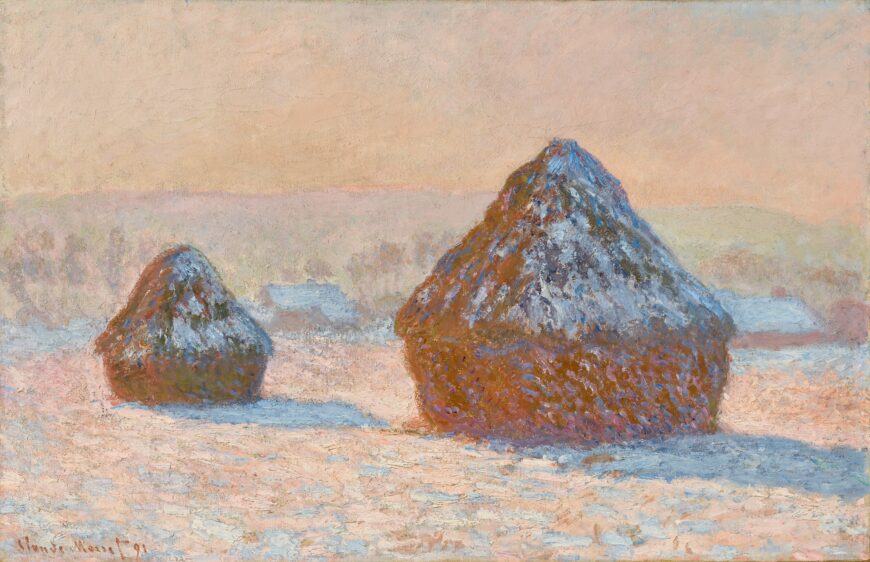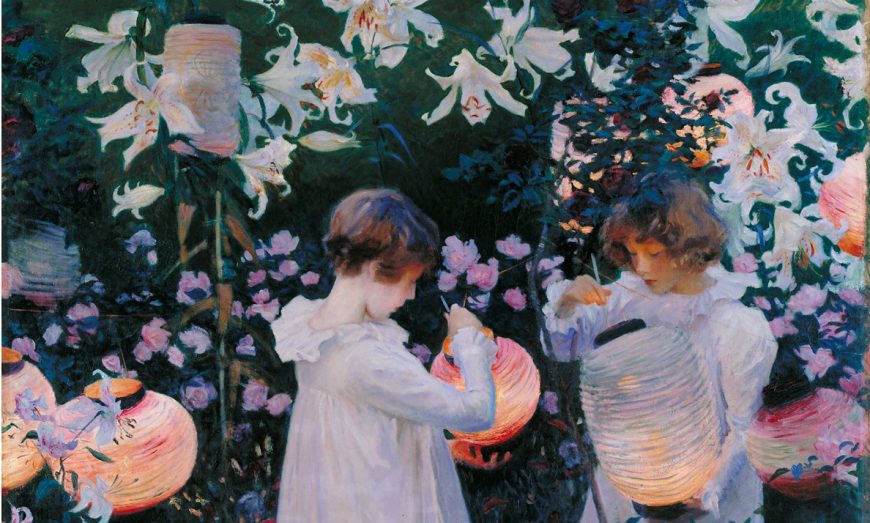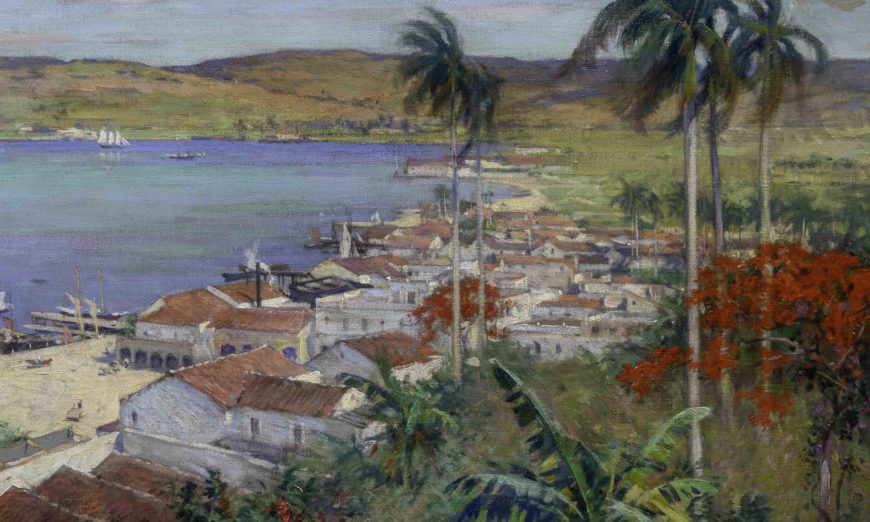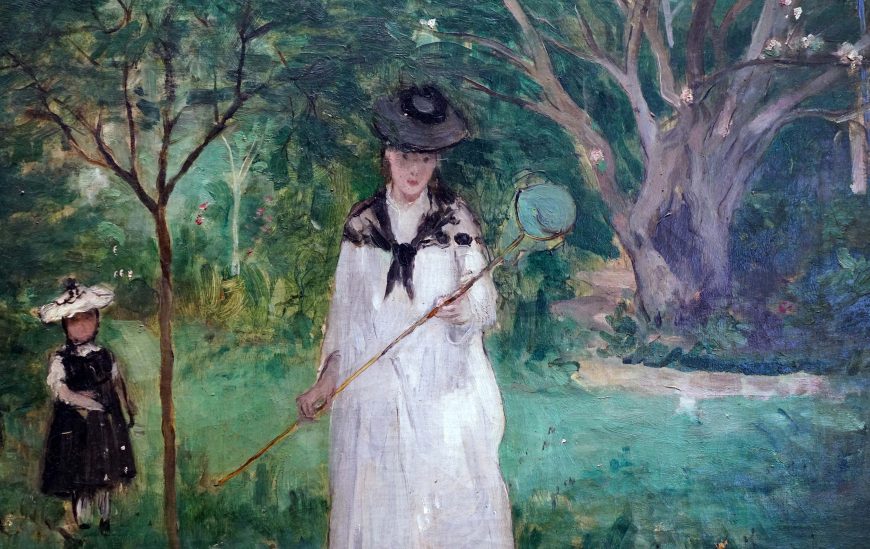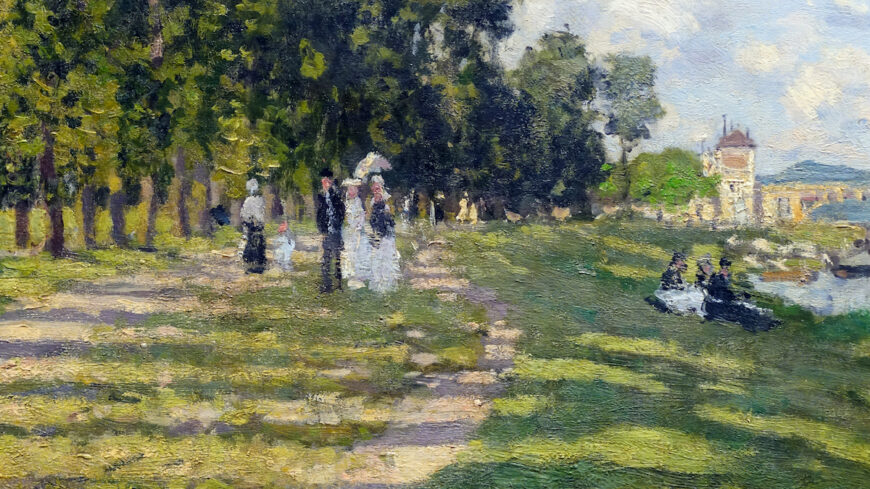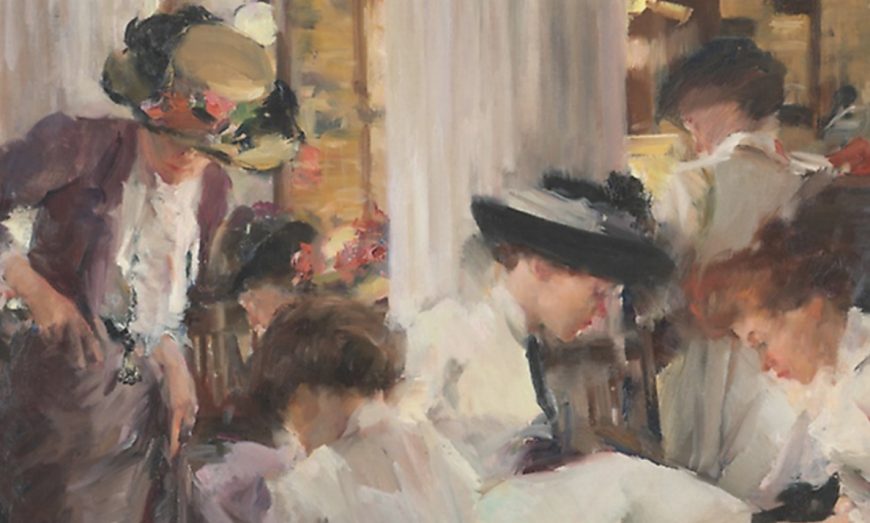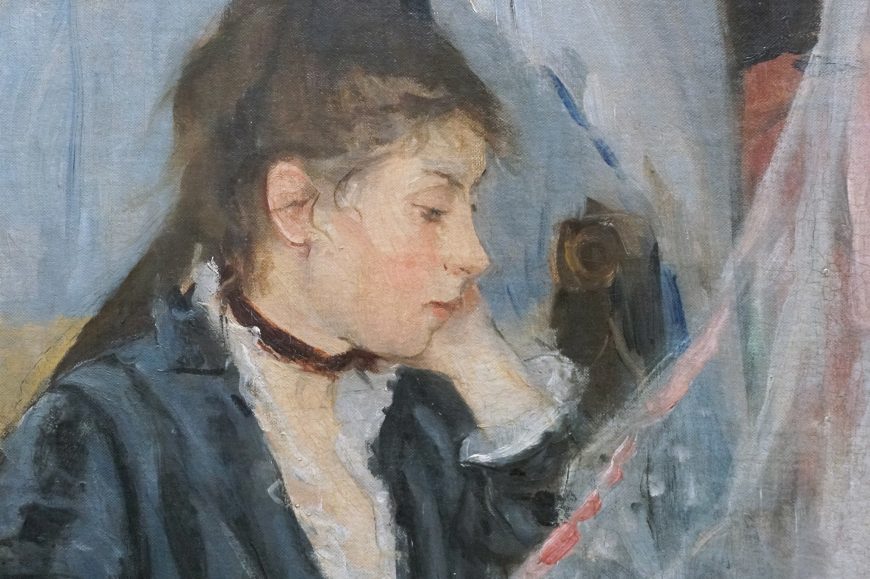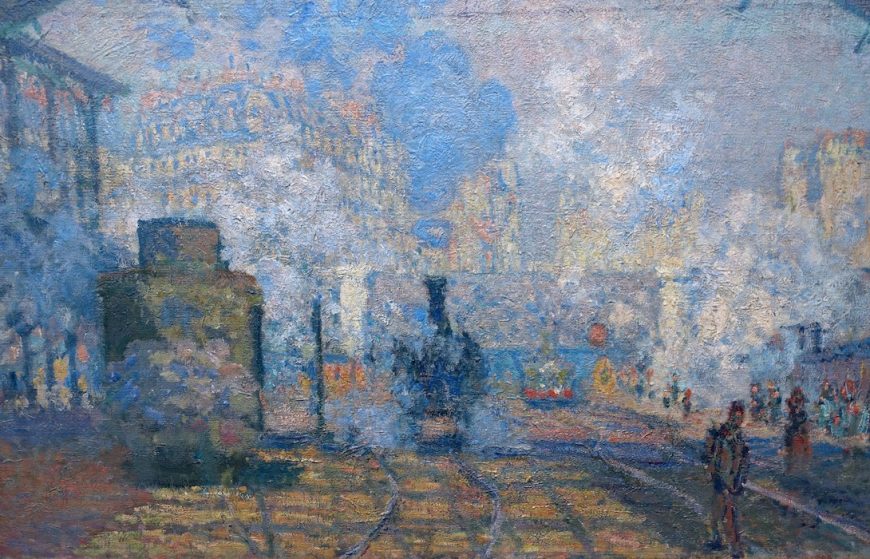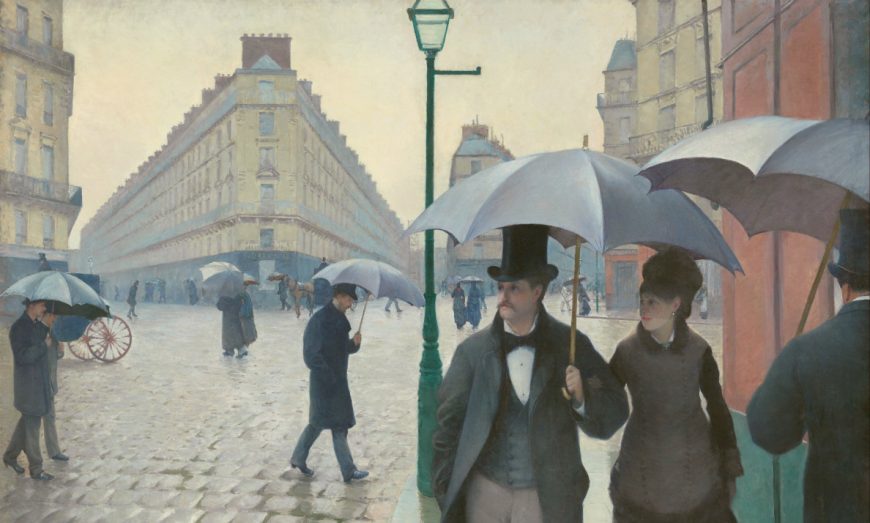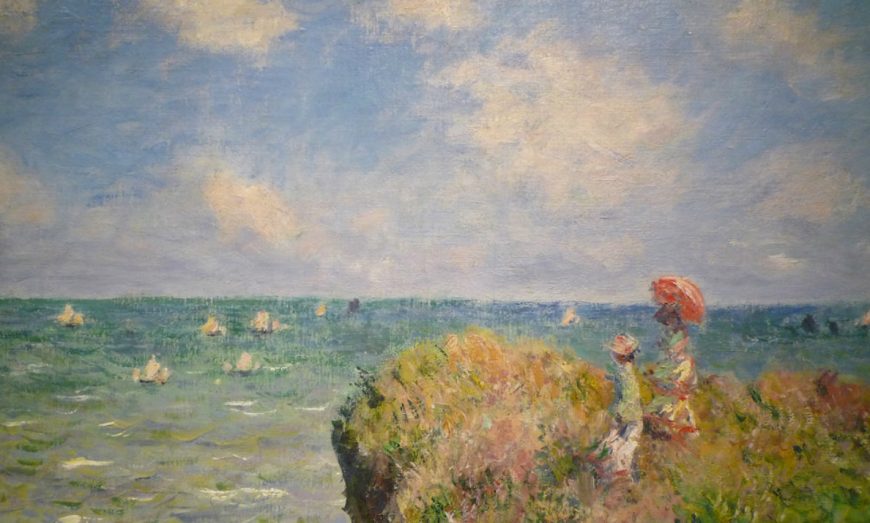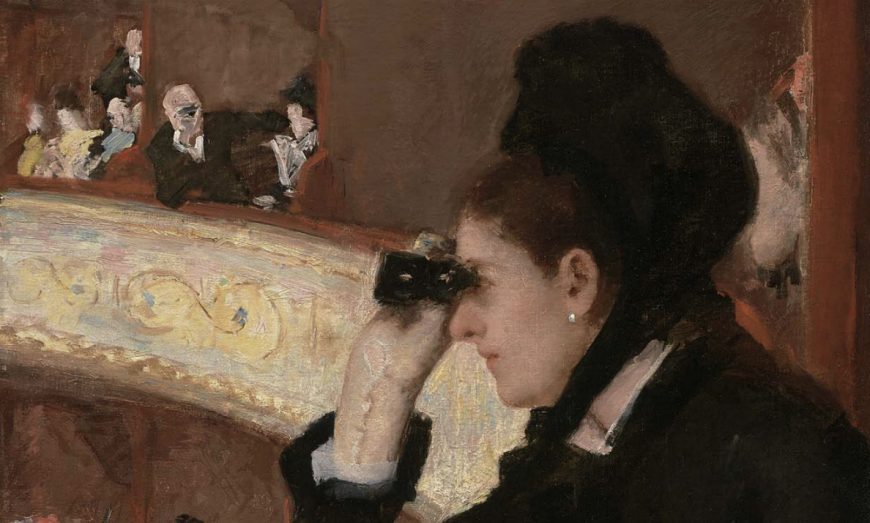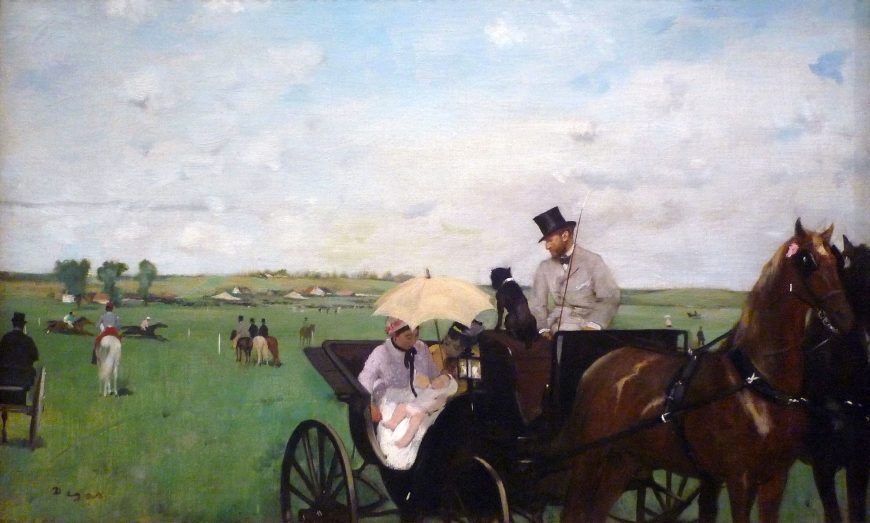Auguste Renoir, The Grands Boulevards, 1875, oil on canvas, 20-1/2 x 25″ / 52.1 x 63.5 cm (Philadelphia Museum of Art)
Auguste Renoir, The Grands Boulevards
[0:00] [music]
Dr. Steven Zucker: [0:05] I think to us, in the early 21st century, this painting looks like quaint old Paris.
Dr. Beth Harris: [0:12] It does, we see a horse and carriage. We see a woman wearing a long Victorian dress with a bow on the back and a pretty hat strolling with her two children. It really does look like a very quaint scene.
Dr. Zucker: [0:25] But to Renoir, and to the people depicted on this boulevard, this would have been incredibly modern. This was a brand new boulevard that rebuilt Paris. This was a new world.
Dr. Harris: [0:36] This was as modern and as contemporary as you could get in the 1870s.
Dr. Zucker: [0:41] And it’s modern not only in terms of what it’s depicting, but it’s modern in terms of how it’s depicted. This painting was made only one year after the first Impressionist exhibition. That term, “Impressionism,” had just been coined. The idea of representing the city in a series of fleeting brushstrokes that seemed to catch the moment was a radically new idea.
Dr. Harris: [1:00] And Renoir was one of a group of artists who were doing this who became known as the Impressionists, who had, as you said, their first exhibition the year before. We might think about Monet, or Camille Pissarro, and Degas, all of them painting different aspects of this new sense of modern life in Paris.
[1:18] Paris was at this moment being rebuilt from an old city with narrow, winding streets to a city of wide boulevards flooded with light. A planned city lined with shops, and cafes, and trees, the city of Paris that we know and love today.
Dr. Zucker: [1:37] It was to be the new imperial city under Napoleon III. It wasn’t just the architecture or the city planning that was being rebuilt. In a sense, French culture was being rebuilt. It was just five years earlier that France had been humiliated in their defeat against the Germans in the Franco-Prussian War. Here we have a rebirth of a modern optimism. But none of that politics is apparent.
Dr. Harris: [1:59] Renoir was interested in giving us a cross-section of what we might see if we walked outside onto the boulevards in Paris. On the left, we have a figure sitting alone on a bench reading a newspaper. Just to the right, we have two men who are talking, who look rather well-dressed, maybe businessmen.
[2:16] Then just to the right of that, that small family led by a mother. Then some figures in a carriage coming our way.
Dr. Zucker: [2:24] The city was a place to view. One could be a dispassionate onlooker, a flâneur.
Dr. Harris: [2:30] You said before that the form of the painting was also radically modern. I think that’s also hard for us to understand, because to us it looks quite normal. We love Impressionist paintings like this, but the sketchiness that we see here is radical.
[2:46] Renoir has reduced these trees to big, broad brushstrokes in some areas that sweep across, and also little dabs of paint.
Dr. Zucker: [2:55] He’s not rendering the type of tree that’s represented here. We might guess that it might be a London plane tree, perhaps, but we don’t know precisely what it is. This is not about conveying the specifics of any individual form other than representing the momentary.
[3:10] That notion of the momentary, of the fragmentary, is such a modern and urban idea. It’s really perfect for this scene.
Dr. Harris: [3:18] In representing the fleeting, but also representing an optical experience. What does this look like to my eye at this moment? Not what I know about a tree, but how I actually perceive and experience that tree with the light coming through it on a bright summer day.
Dr. Zucker: [3:36] He’s remarkably successful in doing this. Look at the carriage, for instance, with the white horse and the driver and then the couple in the back. It’s only the barest notations, and yet, it feels as if that horse is moving forward towards us, and we can almost hear its hoof falls. This becomes an environment that is filled with light, and motion, and filled with sound.
Dr. Harris: [3:56] We talked about this painting as being this remarkably new and modern image in both its form and its content. But in some ways, Renoir is also stepping back just a little bit. He’s giving us some clues about a recession into space.
[4:12] We have a diagonal line that appears to recede into the background, much like a traditional orthogonal going from the bottom right and moving back up toward the left.
Dr. Zucker: [4:22] Especially at the top of the apartment houses and the top of the trees.
Dr. Harris: [4:25] Exactly. But we fail to really calculate a measurable distance into space, and that was something that was required of paintings in the 19th century. He’s also not quite dissolving the form of the human body as much as, for example, Monet is from exactly this time, like the “Boulevard des Capucines,” for example.
[4:47] The figures are really reduced to the short few strokes of paint, and you can’t see fashion, you can’t see gesture. Very characteristic of Renoir is this interest in human beings and their social lives. We’re still getting a sense of family groups, of people talking to one another, of sociability.
Dr. Zucker: [5:07] This was a city inhabited, and Renoir has created that social dynamic that populated this new urban experience.
Dr. Harris: [5:15] Right, but where other artists are interested in depicting the sense of alienation or aloneness of that experience in the city, that was really different from the small-knit communities that had made up Paris before that, Renoir is showing us a more optimistic side of modern life.
[5:33] [music]
| Title | The Grands Boulevards |
| Artist(s) | Pierre-Auguste Renoir |
| Dates | 1875 |
| Places | Europe / Western Europe / France |
| Period, Culture, Style | Impressionism |
| Artwork Type | Painting |
| Material | Oil paint, Canvas |
| Technique |
Loading Flickr images...


